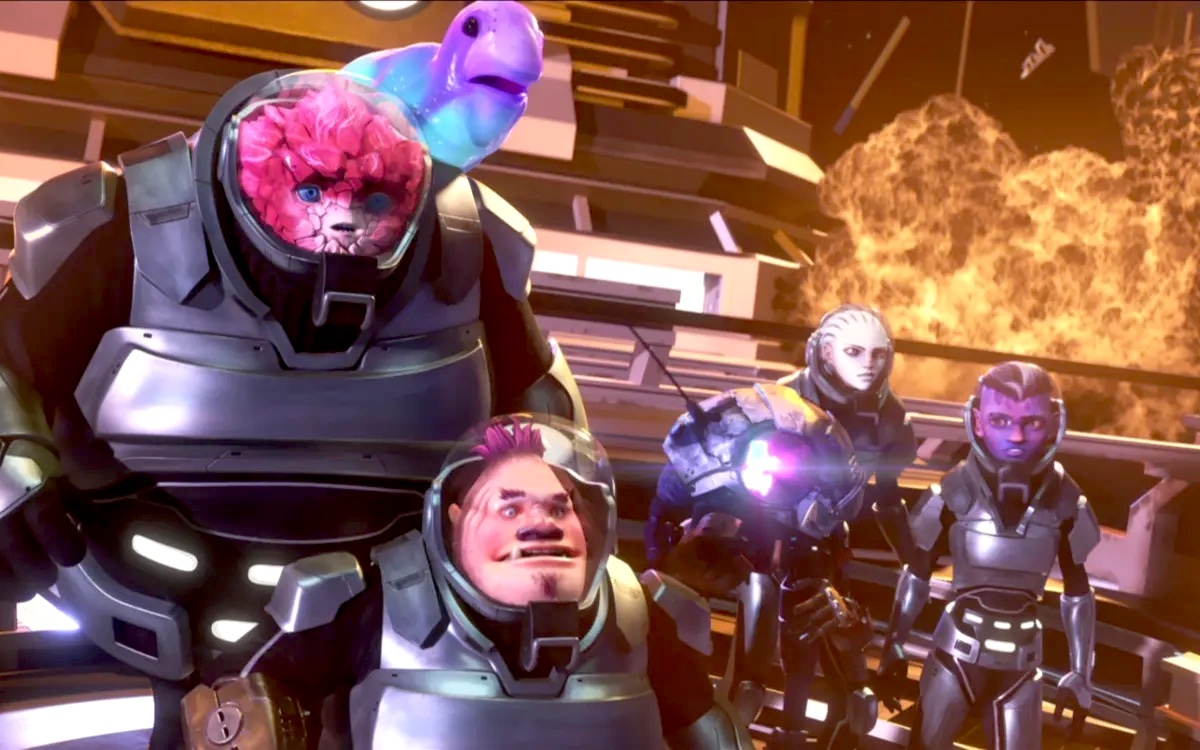How the Cinematic Animation Style of ‘Star Trek: Prodigy’ Came Together


To celebrate the renewal of Star Trek: Prodigy, coming to Netflix in 2024, Mikros Animation teams in Bangalore, who worked on Prodigy, explained how they reached the cinematic quality animation expected on the show in a series of videos posted to the studio’s webpage.
2023 is the 50th anniversary of the Star Trek Universe boldly going animated. Initially disliked by some fans, Star Trek: The Animated Series (1973–1974) went in directions the original series never dared. It finally put Nyota Uhura (Nichelle Nichols) in command of the bridge, designated Christine Chapel (Majel Barrett-Roddenberry) as the U.S.S. Enterprise’s chief medical officer, and introduced a Comanche crew member, Dawson Walking Bear (created by Kiowa tribe member Russell Bates). TAS went on the be the only Star Trek series to win an Emmy Award, the 1974–1975 Daytime Emmy in the area of “Outstanding Children’s Entertainment Series.”
Almost 50 years later, Prodigy hit screens and was nominated for “Outstanding Animated Series” in 2022 at the first annual Children’s & Family Emmy Awards, the first standalone expansion of the Emmys since 1979. Unlike its predecessor TAS, which even featured a plot line involving Satan (dope!), Prodigy was designed for a younger audience and aimed at bringing new fans into the franchise. The series is about a ragtag group of orphans who are being introduced to the values of Starfleet for the first time via Hologram Janeway’s teachings, just like the intended audience.
Although Prodigy ultimately lost to Netflix’s City of Ghosts, it was still a rare major category nomination for the franchise.
Despite losing in the “Outstanding Animated Series” category, Prodigy’s Mikros Animation team did go home with an Emmy win for “Outstanding Production Design.” Likewise, in 2023, Mikros Animation’s Rakshith A went on to win India’s largest animation award for his work on the series, the Ann Award. In honor of their outstanding work on the series, Mikros Animation has released videos that give insight into its team members creative process and how they make the series look so realistic.
“We knew with this property what was to be expected,” said Michael Earnest, Head of Creative Operations, in the video. “We knew the different parties involved: the Star Trek brand itself goes back so far, so it wasn’t just working with Nickelodeon, it was working with the Star Trek team. Nothing that’s come out of that property that has not been top-notch, so it was about doing the best show that we’ve ever produced for Nickelodeon at this time.”
Earnest continued, “Our Mikros Animation team is used to pushing the envelope and delivering the highest episodic quality animation in the world, but this was something completely different. It required a change in mindset. It allowed our artists to kind of play in the sandbox and to push the boundaries. I could not be prouder of the team and what they were able to achieve, whether it be the lighting and the interaction with the characters or just the field of view that the cameras are producing in the movement.”
“Nickelodeon was very clear about what they’re looking for,” added Lighting & Compositing Supervisor Anil Sam. “It’s nothing less than a movie, so the digital cinematography was one thing I’ve seen very much applied to the show. From the start, we made sure the lens and the camera which are used were going to be anamorphic, so the oval shape, the bokehs, and light leaks—all those things we had to replicate…like a cameraman or cinematographer, we took care of each and every detail.”
Elaborating on how they made the digital cinematography look real, the show’s animation supervisor, Anu Kumar, said, “We had to bring the heaviness to the camera movement in every shot, and this was not so easy. This is extraordinary, and we never used to do this in the other shows…If you see the camera, it won’t be jerky, or it won’t be moving any direction unless if it’s accurate. It won’t move in any of the shots. Mostly, it will be heavy, and the push will be mild and the pull, and all the movement will be more like a cinematic camera.”
But that wasn’t the hardest part of the creative process. Animation Supervisor Damodar Sawant said, “Each character is having different characteristics, each charchter should not look that same…so that was our biggest creative challenge.”
“The richness of the characters themselves was like something we hadn’t really seen before,” added Creative Director Rusty Tracy. “The voice cast was perfect. Once you hear their voices, it was just completely unexpected versus their physical appearance, and so for our team, it really pushed us to embrace those personalities and to become those characters.”
Want to know more about the animation process for Star Trek: Prodigy? Watch #StarCast, a four-part series explaining the work of the Mikros Animation teams.
(featured image: Paramount+)
Have a tip we should know? [email protected]